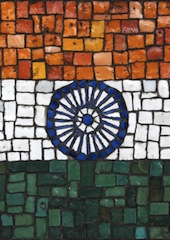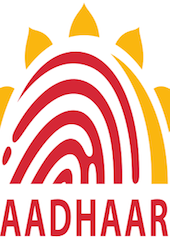India’s National ID: Entitlement to a Number
Will a new national ID actually fix any of India’s problems?
January 13, 2014

Return to part I.
All of the grinding bureaucratic wrangling over a new ID card for India matters a great deal, because amid growing prospects for some, many Indians are still desperately poor. The least that can be done to help them is to disintermediate corruption and the theft of benefits intended for them by “virtue” of a rapacious bureaucracy.
Take the issue of food rations. These are mostly procured by women and shared with family members. The rations are paid out in kind because cash could be easily misappropriated for non-essential purposes, such as the consumption of alcohol by “irresponsible” members of the family.
Despite all the current activities, the idea that the identity card will finally manage to “identify” the poor in India is a strange argument to make in a country where the majority are poor.
Why not just find the rich?
As pointed out by Dr. Kirit Parikh, a former member of India’s planning commission, all India needed to do was to eliminate the “easily identifiable” rich minority and extend welfare benefits to everybody else.
The “easily identifiable” rich make up less than 30% of the population. Better yet, they already carry identity numbers — in their passports, bank accounts and tax payment accounts.
The website of India’s aadhaar project reassuringly answers the question “why aadhaar?” by stating that it is “every resident’s entitlement to ‘the’ number’” (exact words). What the government intended to say is not clear, but the entitlement to a number is not the same as the entitlement to basic necessities of life.
Even the claim that “all one needs to bring with oneself to prove one’s identity are one’s eyes and hands” is questionable. aadhaar cannot establish a person’s identity, economic or otherwise.
National security motive
What it can do is merely validate the claim that the person is who he says he is. Was this the ulterior motive of the project?
To answer that crucial question, a quick trip into history is in order. The idea of issuing national identity cards is traced back to the national democratic alliance (NDA) headed by the BharatiyaJanata Party (BJP). It so happened that it was in power during India’s brief conflict with Pakistan in 1999.
This unexpected military conflict is said to have initiated the decision on issuing mandatory multi-purpose national identity cards for reasons of national security.
India’s present governing coalition, called the united progressive alliance (UPA) under the leadership of the Congress Party, is seen to be presenting the same idea, but in a better light in order to gain political and social acceptance.
After all, nobody can oppose ID cards at the national level if the project is presented as a means to distribute welfare benefits to the poor!
It is ironic that the idea of a national identity card for all Indians originated after a conflict with Pakistan. If the BJP or the Congress Party leaders had just taken the trouble to look across the border into Pakistan carefully, even if only to spy, instead of summoning India’s information technology gurus, they would have made an amazing discovery.
Pakistan beat India to the punch
Pakistan’s four-decade-old national identity card scheme was originally conceived as a surveillance and security tool, but now serves as a means of distributing welfare aid.
Pakistan implemented a national scheme of identity cards way back in 1975, also for reasons of national security. But when the scheme was rolled out, a national identity card with an 11-digit unique number was issued to over 95% of the population.
The first three digits in the number were linked to the district (province) where the person was born and the next two digits signified the year of birth. The last six digits linked the person’s identity to that of his family.
In 2000, all old identity card holders in Pakistan were asked to renew their cards, which captured historic information in the form of bar codes. In 2010, the bar-coded cards were replaced with cards with a magnetic chip of 10-year validity.
Apart from historic details such as place of birth and family history that were captured in the early rounds of the scheme, the latest identity cards of Pakistan are linked to the person’s driver’s license, bank accounts and so on.
Beyond national security
The “security” underpinnings of Pakistan’s identity card cannot be denied. A person without the card cannot enter a government building and the card is required for applying for jobs or passports.
However, the card is also linked to welfare programs such as Benazir Income Support Program. Through this program, over 3.8 million under-privileged families can purchase wheat, rice, sugar and cooking oil worth 1,000 Pakistani rupees in the desired proportion every month from 600 utility stores across the country.
While this card is linked to the national identity card, it is sensibly issued only to the female head of the family to avoid any leakage of the intended aid.
Regional governments formulate their own schemes and distribute welfare benefits to families targeted through the national identity card database.
Emergency management
During emergencies such as floods, temporary cards are issued to people in areas affected by the floods with 180-day validity. This card has been used to distribute food, blankets and fodder for animals within 24 hours of a natural calamity even in the most remote and difficult to access areas.
According to a senior official from Pakistan’s disaster management agency, flood relief was dispatched to victims in remote areas almost instantaneously during the 2010 and 2011 floods through the national identity card that was linked to cash dispensing machines.
For all these impressive successes, which ironically give Pakistan the upper hand over India technologically and administratively, one thing is for sure: While welfare benefits are being targeted and transferred efficiently through the national identity card in Pakistan, it has barely scratched the surface of Pakistan’s persistent development and social problems.
Technology is no silver bullet
That underscores the harsh reality that neither the well-executed plan providing entitlement to an identity card nor the delivery of welfare benefits transferred on the basis of the card has necessarily entitled millions in Pakistan to a better life.
The takeaway for India is probably that complex social, political and governance problems cannot be reduced to simple technical problems.
The focus on a number delivered by technology will not only provide the government a cover to hide its inefficiency, but also shift the blame for poverty onto the poor. India’s unique identity number is not the solution for dealing with poverty. Only ending poverty is!
Takeaways
The idea of a national identity card for all Indians is said to have originated after a conflict with Pakistan.
The idea that an ID card will finally identify the poor in a country where the majority are poor is a strange claim.
India’s rich are <30% of the population. They already have national identities via passports, bank accounts, etc.
If India excludes the documented rich minority, it could extend welfare benefits to everybody else without new IDs.
The idea of a national identity card for all Indians is said to have originated after a conflict with Pakistan.
Pakistan’s ID cards date to 1975. Created for national security, they are now linked to welfare programs.
That Pakistan’s ID system is technologically superior to India’s but hasn’t dented poverty should curb Indian hype.
Complex social, political and governance problems in India cannot be reduced to simple tech problems.

